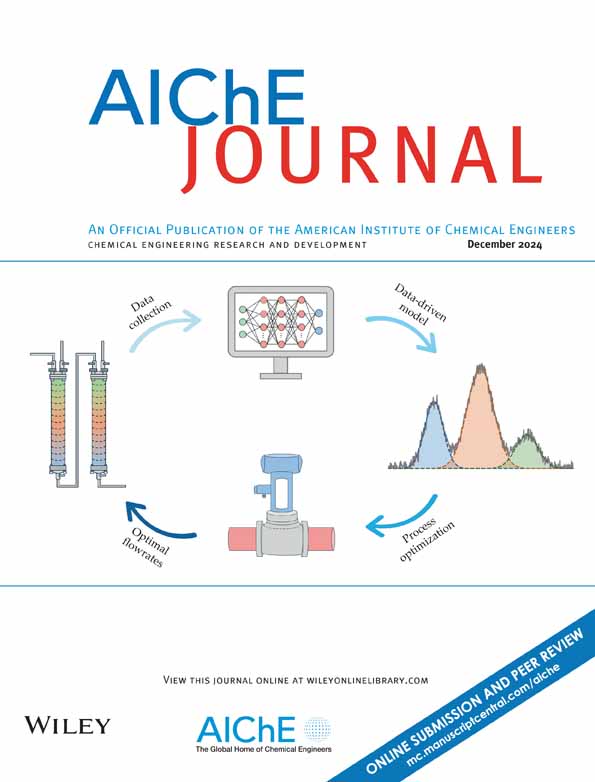Enhanced layer-layer interaction via a tunable C60 layer in Mo2CTx-based catalyst for ammonia synthesis
IF 3.5
3区 工程技术
Q2 ENGINEERING, CHEMICAL
引用次数: 0
Abstract
Molybdenum (Mo) serves as the key site in the nitrogenase enzyme, catalyzing the conversion of N2 into NH3 under ambient conditions. However, the strong affinity of Mo sites for N2 hinders H2 adsorption due to the competitive nature of N2 and H2 on a single site, resulting in an unsatisfactory ammonia synthesis performance. Here, we propose an approach of intervening C60 layer as a second site for H2 adsorption on two-dimensional Mo2CTx. The C60 layer thickness is readily tunable by varying its loading content. An optimal C60 layer significantly enhances the electronic interaction between the C60 layer and the Mo2CTx layer, leading to a remarkable decrease in the work function and an increase in the electron density of Mo atoms. Therefore, the separate adsorption of N2 and H2 on distinct sites is substantially facilitated. The present work offers insights into the correlation between structure and performance in NH3 synthesis catalysts.求助全文
约1分钟内获得全文
求助全文
来源期刊

AIChE Journal
工程技术-工程:化工
CiteScore
7.10
自引率
10.80%
发文量
411
审稿时长
3.6 months
期刊介绍:
The AIChE Journal is the premier research monthly in chemical engineering and related fields. This peer-reviewed and broad-based journal reports on the most important and latest technological advances in core areas of chemical engineering as well as in other relevant engineering disciplines. To keep abreast with the progressive outlook of the profession, the Journal has been expanding the scope of its editorial contents to include such fast developing areas as biotechnology, electrochemical engineering, and environmental engineering.
The AIChE Journal is indeed the global communications vehicle for the world-renowned researchers to exchange top-notch research findings with one another. Subscribing to the AIChE Journal is like having immediate access to nine topical journals in the field.
Articles are categorized according to the following topical areas:
Biomolecular Engineering, Bioengineering, Biochemicals, Biofuels, and Food
Inorganic Materials: Synthesis and Processing
Particle Technology and Fluidization
Process Systems Engineering
Reaction Engineering, Kinetics and Catalysis
Separations: Materials, Devices and Processes
Soft Materials: Synthesis, Processing and Products
Thermodynamics and Molecular-Scale Phenomena
Transport Phenomena and Fluid Mechanics.
 求助内容:
求助内容: 应助结果提醒方式:
应助结果提醒方式:


